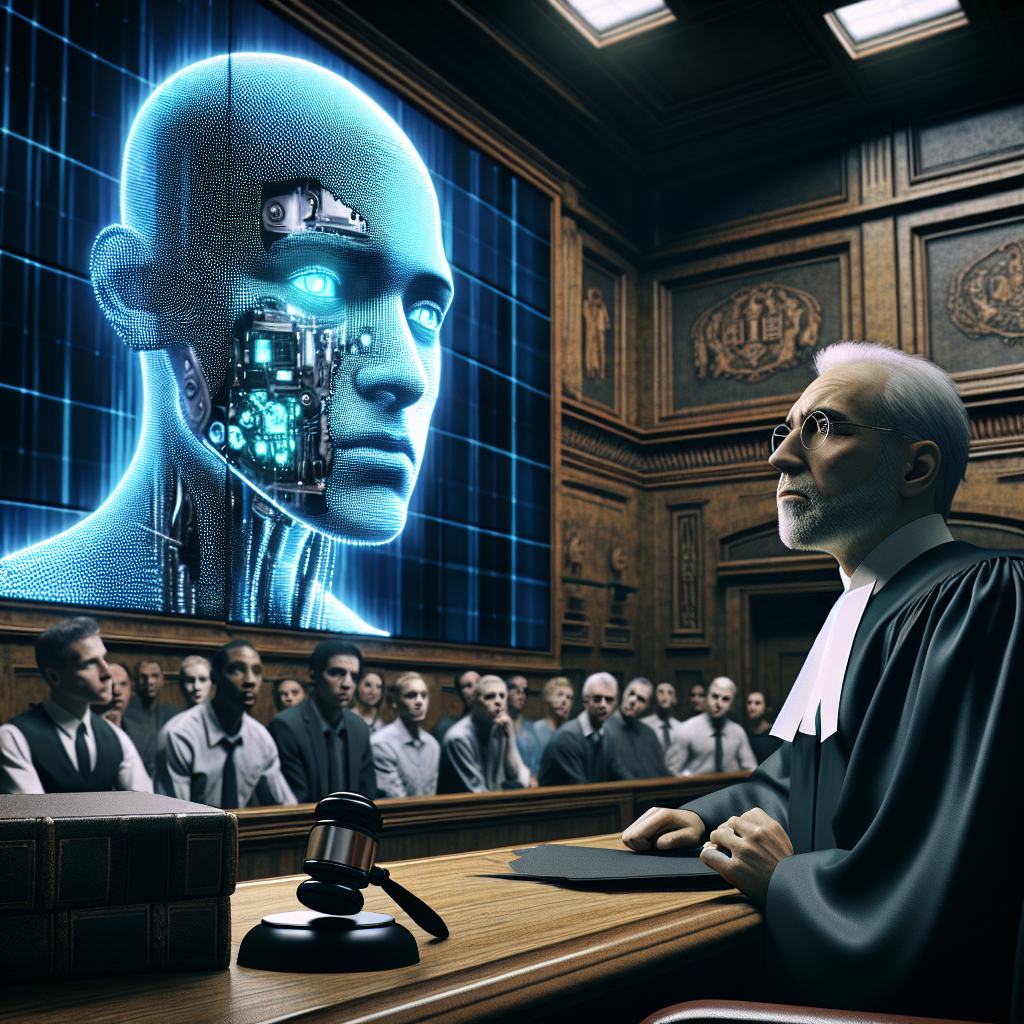AI Avatar Fails in Legal Appeal, Judge Responds Cynically
In a landmark case that highlights the ongoing debate about the intersection of artificial intelligence (AI) and the legal system, a defendant’s attempt to use an AI-generated avatar for a legal appeal has been dismissed by a judge, who responded with palpable cynicism. This incident not only underscores the potential limitations of utilizing such technology in a courtroom but also raises important questions about the future role of AI in legal contexts.
The Unconventional Defense Strategy
The case revolves around a defendant who sought to leverage an AI avatar as a means of presenting their legal appeal. The avatar was designed to simulate human engagement and intended to deliver the defendant’s arguments in a more relatable manner. While this method may seem innovative, the judge’s disapproval suggests that the legal system may be a few steps behind when it comes to embracing such technological advances.
Reasons undermining the defense:
- Credibility Issues: The judge pointed out that the use of an AI avatar might be perceived as a gimmick that undermines the seriousness of the legal process.
- Lack of Authenticity: An AI-generated representation lacks the personal touch of a real human, which is often crucial in legal arguments.
- Questionable Legal Framework: Existing rules and regulations concerning court proceedings may not sufficiently cover the use of AI in this manner, raising ethical concerns.
Judge’s Remarks: An Eye-Opener for AI in Court
The judge didn’t hold back in their assessment, openly deriding the notion that an AI avatar could adequately replace a traditional human defense. In a series of pointed remarks, they emphasized that the legal system is built on principles that require genuine human interaction and comprehension.
Key points from the judge’s critique:
- Human Element Essential: The effectiveness of a legal argument often hinges on the human ability to convey emotion, intention, and personal experiences—traits that an AI simply cannot replicate.
- Legal Precedents: The judge underscored that legal arguments cannot be made by avatars; they must be anchored in established legal precedent and argumentation that AI lacks.
- Technology vs. Tradition: The courtroom remains a space governed by traditional practices, and novel approaches must be carefully weighed against historical norms.
The Broader Implications of AI in Legal Settings
While this failed attempt may be seen as a setback for proponents of AI technologies in legal contexts, it also serves as a vital learning opportunity. The incident sparks an important dialogue about how AI can be integrated into the legal profession responsibly and ethically.
Potential uses of AI in legal practice:
- Document Review: AI technology can significantly speed up the review of legal documents, helping lawyers identify relevant information more efficiently.
- Research Assistance: AI can assist lawyers in conducting legal research by analyzing vast databases of case law to find pertinent precedents.
- Predictive Analytics: AI tools are being developed to analyze case outcomes based on historical data, providing lawyers with insights into how certain cases may unfold.
The Path Forward for AI in Law
Despite the pitfalls highlighted by this case, the broader integration of AI into legal practices continues to gain traction. Legal professionals and technologists must work together to ensure that AI technologies not only enhance efficiency but also adhere to the ethical standards and procedural norms of the legal system.
Strategies for responsible AI implementation:
- Regulatory Frameworks: Developing clear guidelines for the acceptable use of AI in legal practice will be critical to its adoption.
- Training Legal Professionals: Educating lawyers about AI capabilities and limitations will optimize its application in their workflow.
- Public Awareness: Raising awareness among the public about how AI is evolving in the legal sphere can help demystify the technology and foster acceptance.
Final Thoughts: Navigating the Future of Legal AI
The recent legal drama surrounding the failed AI avatar appeal serves as a reminder of the ongoing challenges faced by technology in traditional settings. This case not only illuminates existing barriers but also emphasizes the need for a collaborative approach in harnessing the potential of AI within legal frameworks.
Ultimately, the future of AI in the legal profession lies not in replacing the human element, but in augmenting it—leveraging technology to enhance the capabilities of legal practitioners while retaining the fundamental principles that govern justice and fairness.
As the legal system continues to evolve, it is imperative to stay attuned to these developments and engage in healthy discussions about the role of technology in advancing justice. The tension between AI and traditional practices holds significant potential for redefining how legal entities navigate their future—and it is essential to approach these advancements thoughtfully and responsibly.




